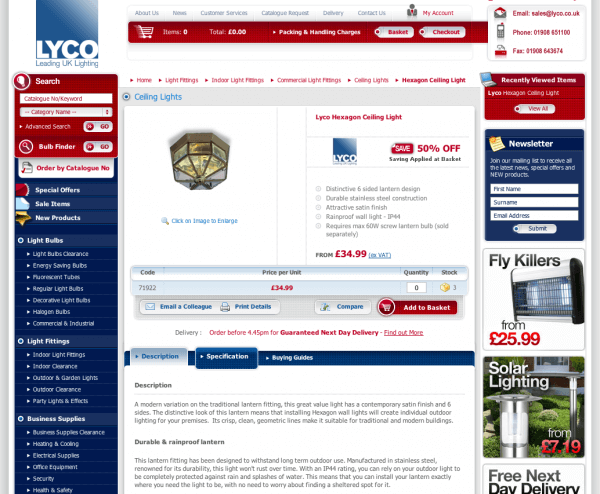Four tips to get better quality copywriting for less
There are certain things in life that we think of as free even if they aren’t.
- Water – turn on a tap and out it comes
- Motorways – drive as far as you like whenever you feel like it
- Web content –it doesn’t take long to bash a few words out
Yet the fact is, that every piece of copy you commission is a cost that comes straight out of the bottom line.
There are seen and unseen costs. The seen cost is what you pay your copywriter to create the words and the web developer to upload it. The unseen cost is your management time of briefing it out and approving it. Every revision costs more time and money. Cut that time and you’ll cut the expense.
Take a look at this example of a typical retail site...

Websites and content are, of course, far from free. Every product on your website has a cost which includes photography, copy and upload. Improving your copy briefing process saves time and reduces the fixed cost.
That doesn’t mean compromising on quality. In fact, having a better approvals process goes hand in hand with having a better briefing process, which means you get better quality copy.
One way to streamline your approvals process is by developing a tight specification checklist in addition to the brief at the start of the job. If a piece of copy matches up, it gets approved. If it doesn’t, then the checklist pinpoints where the issues are so it’s easy to get revisions done. Here are some ideas that I recommend to reduce the cost of copywriting.
1 Manage the process
In essence, this is no different from how you would commission any product, but it is rare for projects to be managed this way. Instead most companies rely on a and approvals are at the mercy of various people on the marketing team.
A team approach is definitely the right way to create certain types of copy such as advertisements, ‘About Us’ and home pages of websites which are one-of-a-kind. However it’s a recipe for headaches and nightmares in situations where a large volume of high quality content is required, such as on a typical retail site.
2 Brief v specification
The difference between the brief and the specification is in the detail. The brief tends to be descriptive, giving an overview of the business objectives, marketing background, communication objectives, target audience, competition and tone of voice. The specification is an analysis of the prototype copy, and lays down objective rules for it covering:
- Exact format such as word length, number of bullet points, sub-heads and paragraphs, including where to use capitals, bold and underlining.
- Type of information to be included in each section of the copy.
- When and where to use keywords
- Spelling, Grammar & Punctuation, including ‘house style’ for hypens and apostrophes and whether to refer to companies as ‘it’ or ‘they’..
3 Tone of Voice
The only area of the specification that is open to interpretation is tone of voice. However, even here, there are steps that can be taken to nail it down and make the judgement less subjective. In addition to the sample copy which is in the correct tone of voice, the specification should include a description of the tone of voice, who is involved in the conversation (the seller and the buyer).
This process is not suitable for every copywriting project. However it is ideal for any retail website of 150+ SKU’s or more. The principles can also be adapted for any project where a large volume of original content is required to be written to a similar format from supplied information, such as blog posts or social media commentaries.
4 More Sales
It does take time to set up a specification, but it’s worth it as it saves money in the long run. Another advantage is that, by being more focused on the copy requirements, it’s likely that the copy itself will be more focused and do the job better – so you’ll sell more.
That in turn means that the cost of copy, photography and upload is amortised over more products, which means that % cost per sale goes down – perhaps the most satisfying way to get better content for less.







